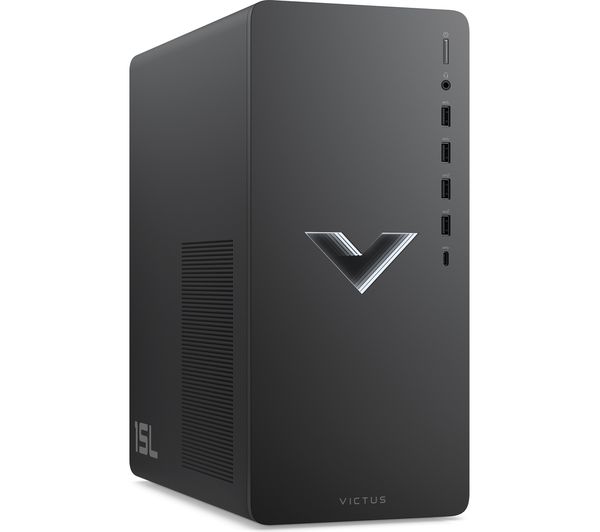WordPress is one of the most popular and powerful platforms for creating websites and blogs. It is free and open-source software that allows you to customize your site with thousands of themes and plugins. WordPress also has a large and active community of users and developers who can help you with any questions or issues you may encounter.
But before you can start building your dream website with WordPress, you need to install it on your web server. This may sound intimidating but don’t worry. In this article, we will guide you through the process of installing WordPress step by step. We will cover the following topics:
- What are the requirements for installing WordPress?
- How to choose a domain name and a web hosting service for your WordPress site?
- How to download and upload WordPress files to your web server?
- How to create a database and a user for your WordPress site?
- How to run the WordPress installation script and set up your site?
By the end of this article, you will have a fully functional WordPress site ready to go live. Let’s get started!
Choosing a hosting provider
A web hosting provider is a company that offers you space on its servers to store your website files and make them accessible to the internet. A web hosting provider is essential for running a WordPress site, as it provides you with the resources and security you need to keep your site online.
How to choose a web hosting provider?
There are many different web hosting providers to choose from, so it’s important to do your research and choose the right one for your needs. When choosing a web hosting provider, consider factors such as price, features, and customer support.
Some of the most popular web hosting providers for WordPress are:
| Hosting provider | Starting prices | Uptime | Free backups | URL |
| eUK | £23.41/mo | 100% | Yes | https://www.eukhost.com/cloud-hosting/ |
| Interserver | $2.50/mo | 99.9% | Yes | https://www.interserver.net/webhosting/ |
| Easyspace | £3.99/mo | 99.9% | No | Easyspace |
| EuroDNS | €1.99/mo | 99.9% | No | https://www.eurodns.com/website-hosting |
| Hosting.co.uk | £2.40/mo | 99.9% | Yes | https://www.hosting.co.uk/web-hosting/ |
| Hostinger | $1.39/mo | 99.9% | Yes | https://www.hostinger.com/web-hosting |
| Hostpapa | $3.95/mo | 99.9% | Yes | https://www.hostpapa.com/web-hosting/ |
| Namecheap | $1.44/mo | 100% | Yes | https://www.namecheap.com/hosting/shared/ |
| GoDaddy | $5.99/mo | 99.9% | No | https://www.godaddy.com/hosting/web-hosting |
Purchasing a domain name
A domain name is the address of your website on the internet. It is what people type in their browsers to visit your site. For example, the domain name of this site is bing.com.
A domain name is important for your WordPress site, as it represents your brand and identity online. It also affects your site’s visibility and ranking on search engines.
But how do you choose a domain name? Here are some tips to help you:
- Choose a domain name that is relevant to your site’s niche and purpose
- Choose a domain name that is short, catchy, and easy to remember
- Choose a domain name that is unique and not trademarked or copyrighted by someone else
- Choose a domain name that has a popular extension, such as .com, .net, or .org
Once you have decided on a domain name, you need to register it with a domain registrar. A domain registrar is a company that sells and manages domain names. You can either register your domain name with your hosting provider or with a separate domain registrar.
Some of the most popular domain registrars are:
| Hosting provider | Starting prices | Uptime | Free backups | URL |
| eUK | £23.41/mo | 100% | Yes | https://www.eukhost.com/cloud-hosting/ |
| Interserver | $2.50/mo | 99.9% | Yes | https://www.interserver.net/webhosting/ |
| Easyspace | £3.99/mo | 99.9% | No | Easyspace |
| EuroDNS | €1.99/mo | 99.9% | No | https://www.eurodns.com/website-hosting |
| Hosting.co.uk | £2.40/mo | 99.9% | Yes | https://www.hosting.co.uk/web-hosting/ |
| Hostinger | $1.39/mo | 99.9% | Yes | https://www.hostinger.com/web-hosting |
| Hostpapa | $3.95/mo | 99.9% | Yes | https://www.hostpapa.com/web-hosting/ |
| Namecheap | $1.44/mo | 100% | Yes | https://www.namecheap.com/hosting/shared/ |
| GoDaddy | $5.99/mo | 99.9% | No | https://www.godaddy.com/hosting/web-hosting |
Installing WordPress
There are two main ways to install WordPress on your web server: manually or with a one-click installer.
To install WordPress manually, you need to follow these steps:
- Download the latest version of WordPress from wordpress.org
- Unzip the WordPress files and upload them to your web server using an FTP client or a file manager
- Create a database and a user for your WordPress site using your hosting provider’s control panel
- Edit the wp-config.php file in the WordPress folder and enter your database details
- Visit your domain name in your browser and follow the instructions to complete the WordPress installation
To install WordPress with a one-click installer, you need to follow these steps:
- Log in to your hosting provider’s control panel and look for a WordPress installer tool, such as Softaculous, Installatron, or Fantastico
- Click on the WordPress icon and fill in the required details, such as your domain name, site title, admin username, and password
- Click on the install button and wait for the process to finish
- Visit your domain name in your browser and log in to your WordPress dashboard
Which method is best?
The best method for installing WordPress depends on your skill level and comfort level with technical tasks. If you’re new to WordPress, I recommend using a one-click installer. It’s the most straightforward way to install WordPress. If you’re more experienced with technical tasks, you may want to install WordPress manually. This gives you more control over the installation process, but it’s also more complicated.
Setting up your WordPress site
Congratulations! You have successfully installed WordPress on your web server, and you are ready to start building your website. But before you dive into creating content and designing your site, there are some essential steps you need to take to set up your WordPress site properly.
Here are some of the things you need to do to set up your WordPress site:
Choose a theme: A theme is a collection of files that determines the appearance and layout of your site. WordPress has thousands of free and premium themes available for you to choose from. You can browse and install themes from the WordPress dashboard or upload them manually from your computer.
Install plugins: Plugins are extensions that add functionality and features to your site. WordPress has over 50,000 free and paid plugins available for you to install. You can find and install plugins from the WordPress dashboard or upload them manually from your computer.
Configure settings: WordPress has various settings that allow you to customize your site’s behaviour and performance. You can access and change these settings from the WordPress dashboard. Some of the settings you need to configure are:
General: This is where you can set your site title, tagline, URL, time zone, language, and other basic information.
Writing: This is where you can set your default post category, post format, and other writing options.
Reading: This is where you can set your homepage display, blog posts per page, syndication feeds, and other reading options.
Discussion: This is where you can set your comment settings, moderation rules, notification emails, and other discussion options.
Media: This is where you can set your image sizes, file types, and other media options.
Permalinks: This is where you can set your URL structure, category base, tag base, and other permalink options.
Create pages: Pages are static content that does not change frequently, such as About, Contact, Privacy Policy, etc. You can create pages from the WordPress dashboard by clicking on Pages > Add New. You can also assign a page as your homepage or as a parent page for subpages.
Create posts: Posts are dynamic content that is displayed in reverse chronological order on your blog page or homepage. You can create posts from the WordPress dashboard by clicking on Posts > Add New. You can also assign posts to categories and tags for better organization and navigation.
Customize widgets: Widgets are small blocks of content that can be displayed in different areas of your site, such as the sidebar, footer, header, etc. You can customize widgets from the WordPress dashboard by clicking on Appearance > Widgets. You can drag and drop widgets to different widget areas and configure their settings.
Customize menus: Menus are navigation elements that help users find their way around your site. You can customize menus from the WordPress dashboard by clicking on Appearance > Menus. You can create and edit menus and assign them to different menu locations on your site.
These are some of the basic steps you need to take to set up your WordPress site. Of course, there are many more things you can do to enhance and optimize your site, such as adding a logo, changing colours, installing security plugins, etc. But for now, you have a solid foundation for your WordPress site that you can build upon.
Conclusion
You have learned the basics of WordPress and how to create and customize your website. You have also gained some valuable skills and knowledge that will help you in your online journey.
But this is just the beginning. WordPress is a powerful and versatile platform that offers endless possibilities for you to grow and improve your site. There are always new things to learn and explore with WordPress, such as:
- How to optimize your site for speed and performance
- How to secure your site from hackers and malware
- How to backup and restore your site in case of emergencies
- How to monetize your site and earn money online
- How to grow your audience and traffic with SEO and social media
- How to extend your site’s functionality with advanced plugins and themes
And much more!
So where do you go from here? Here are some tips for beginners who want to take their WordPress site to the next level:
- Keep learning: WordPress is constantly evolving and updating, so you need to stay on top of the latest trends and developments. You can find tons of resources online, such as blogs, podcasts, videos, courses, books, etc. that can teach you more about WordPress.
- Join the community: WordPress has a huge and active community of users and developers who can help you with any questions or issues you may encounter. You can join online forums, groups, chats, meetups, etc. where you can interact with other WordPress enthusiasts and experts.
- Experiment and have fun: WordPress is a platform that allows you to express your creativity and personality. You can try different things with your site and see what works best for you. You can also have fun with your site and make it unique and memorable.
We hope this article has helped you install and set up WordPress successfully. We wish you all the best with your WordPress site and we hope you enjoy the process as much as we do. Happy WordPressing!





















